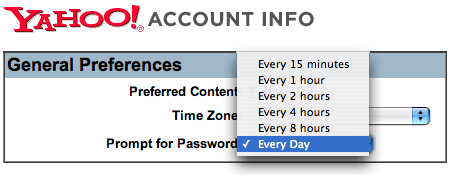Netscape Now!
(This article cross-posted on the Newsvine Blog)
 You remember 1996. You had e-mail. Your friends didn’t. You could Yahoo. Your friends couldn’t. It was a time when most of the world spent less time online than they did eating breakfast. Two of the standout successes during this early stage of internet adoption were America Online and Netscape Communications. America Online’s strategy was to sell dial-up internet access for a monthly fee and provide users with a walled garden of content they couldn’t get anywhere else at the time. Netscape’s strategy was to own the piece of software that sat between the consumer and the internet and ultimately make money from both sales of that software and other endeavors created by “browser lock-in”.
You remember 1996. You had e-mail. Your friends didn’t. You could Yahoo. Your friends couldn’t. It was a time when most of the world spent less time online than they did eating breakfast. Two of the standout successes during this early stage of internet adoption were America Online and Netscape Communications. America Online’s strategy was to sell dial-up internet access for a monthly fee and provide users with a walled garden of content they couldn’t get anywhere else at the time. Netscape’s strategy was to own the piece of software that sat between the consumer and the internet and ultimately make money from both sales of that software and other endeavors created by “browser lock-in”.
Both companies saw tremendous initial success only to eventually see their fortunes turn sour as they were beaten down by competitors and the general move towards openness on the internet.
It is with curious anticipation then that we watch today the relaunch of the Netscape brand by parent company AOL as a “new generation of news portal” (beta site is here). Comparisons have already been made to Newsvine and Digg by media outlets like Red Herring and InformationWeek, but I’m not going to call them copycats as many others will. Everything’s been done before in one fashion or another and to accuse a new player of just ripping off an existing idea is to discount any and all creativity they may bring to the table.
Developing a new genre of news site is all about creativity, and as much as don’t always find myself agreeing with Netscape’s leader Jason Calacanis, I certainly respect his prowess as a dealmaker and his ability to get creative with the tools he’s given. Regardless of what you think of the guy, he’s good for AOL and he’s probably good for this particular product.
So the big question everyone’s going to be asking is, how does this affect Newsvine, Digg, or any of the other sites in this same general movement to modernize the news? If you ask me, I’d say it helps and helps a lot. The fact of the matter is that probably less than 1 out of 100 people in the world have ever even heard of Digg and even less have heard of Newsvine. This axiom is supported by common sense as well as observations like Ethan Kaplan’s in which he found that only 5 college students (all male) out of 100 in a particular lecture hall had heard of Digg. And these are college students! It’s really easy to get sucked into the trap of thinking the rest of the world is even 50% as tech-savvy as you are, but the reality is the exact opposite.
So what’s the point here? The point is that most of the world is completely unaware that they are beginning to have power over the news. We see this every day at Newsvine. People use the site to read the news just like they would at, say, CNN.com, and not until they *really* dig in do they find out they can write, seed, and influence the news mix by interacting with it. Part of this is that our interface is probably a little too subtle and demure for newcomers, but the other part is that people just aren’t expecting it.
With Netscape and AOL helping to spread the word about the democratized news movement, it increases the amount of people who are even ready for a site like Netscape, Digg, or Newsvine. It gets people thinking about getting more from their news and we like that very, very much.
In the end, there will be multiple successful news-writing, news-gathering, and news-sharing communities on the web. Most people will be members of more than one. The community which endears itself most to you is the one you’ll probably spend the most time in. And with that, I gladly welcome Netscape to the “social news” fold. Just for kicks, I’m going to fire up a copy of Communicator 4.72 and see if the site renders. :)
(Sorry, I had to get at least one retro-Netscape snark in)
 In the spirit of giving, some of our favorite Newsviners have banded together to create the
In the spirit of giving, some of our favorite Newsviners have banded together to create the  Just a quick note that I’ll be appearing live on G4TV’s
Just a quick note that I’ll be appearing live on G4TV’s  After two happy years with a Treo 600 and a couple of false starts with a
After two happy years with a Treo 600 and a couple of false starts with a 


 Yesterday, I went out and bought a brand-new
Yesterday, I went out and bought a brand-new  I don’t post too often about upcoming speaking gigs because I assume most readers don’t care, but since I have a few coming up, here’s a quick combined rundown. If you’re in town for any of these and want to talk a little shop, let me know:
I don’t post too often about upcoming speaking gigs because I assume most readers don’t care, but since I have a few coming up, here’s a quick combined rundown. If you’re in town for any of these and want to talk a little shop, let me know: